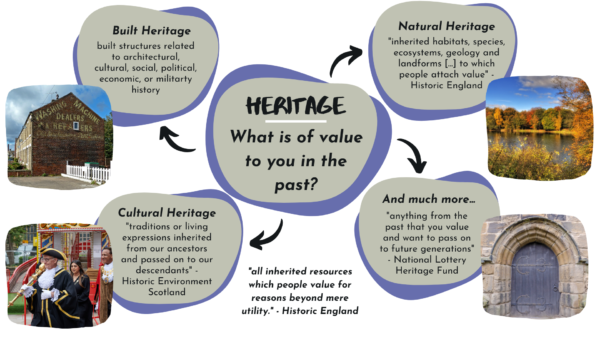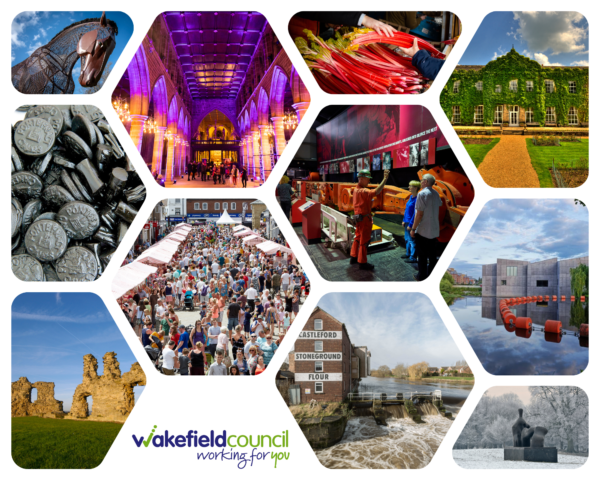Wakefield Council are developing a Heritage Framework document and we need your help. The council have commissioned Heritage Lincolnshire to ask people from around the district what you value from the past and how this heritage may be safeguarded in the future.
The Heritage Framework with include the built heritage, natural environment and cultural heritage of the district and create the vision for how all forms of heritage will be celebrated, used and conserved in the future. This will include the strategy document and an action plan showing how to make this vision a reality.

We held workshops in January 2023
-
- Wakefield Library, 17th January 2023, 6-8pm
- Pontefract Library, 18th January 2023, 6-8pm
Hemsworth Library, 19th January 2023, 6-8pmCancelled due to low bookings- Online via Zoom, 23rd January 2023, 5.30-7pm
Wakefield District Heritage Framework Questionnaire
This questionnaire is now closed.
Scroll down to learn more about Wakefield District’s heritage:

Wakefield district is rich in natural and built heritage. We have a wealth of tangible and intangible heritage embedded within our local communities and accessible to the many visitors who come to district to enjoy our diverse cultural and built heritage. Wakefield is a district with high aspirations and we want to ensure that our heritage plays a significant and prominent role in celebrating our communities, place and district. Without our heritage, Wakefield simply would not be the place it is today.
Wakefield is a cathedral city, and the wider district is made up of a collection of towns and settlements from Castleford, Hemsworth, Horbury, Normanton, Pontefract, Ossett, South Elmsall to Ackworth, Featherstone, Fitzwilliam, Knottingley, South Kirkby and Woolley. The character of our district has grown from the people and the diverse industries in which they have worked: from coal production, glassmaking, shipbuilding and textiles to rhubarb and liquorice production. The coal seams beneath our feet connect our communities; our network of canals, railways, and roads have taken goods, people and ideas, to all corners of the world; and in return people have come to Wakefield to shape its future.
We are home to world class heritage assets from the historic landscapes, nature reserves and buildings fine parks and gardens of special historic interest, lakes and countryside and a national museum celebrating our coalmining heritage. Additionally, there are 26 Grade I, 59 Grade II* and 660 Grade II listed buildings in the district. However, our heritage is more than buildings, monuments and landscapes – we have outstanding collections of objects and archives and museums in Castleford, Pontefract and Wakefield including the Mental Health Museum at Fieldhead Hospital, a living history experience at the National Coal Mining Museum of England and extensive archives held at the West Yorkshire History Centre including the John Goodchild collection. We also have the fine historical art collections, including the Gott Collection, held at The Hepworth Wakefield and have a strong heritage of rugby league with three famous clubs rich in tradition – Castleford Tigers, Featherstone Rovers and Wakefield Wildcats.
Wakefield’s population is continually evolving, from economic migration from Eastern Europe to most recently welcoming refugees from Afghanistan. In addition, we have many long-established ethnic minority communities across the district with 7.2% of Wakefield residents defining their ethnicity as other than White British and our most common non-English languages are Polish, Urdu, and Latvian. We aspire for the Heritage Framework to champion the diverse voices from our district, and ensure our approach represents all communities and identities. It is these varied strands of rich heritage and proud local communities, all with their own stories, that make Wakefield district different and distinctive.
